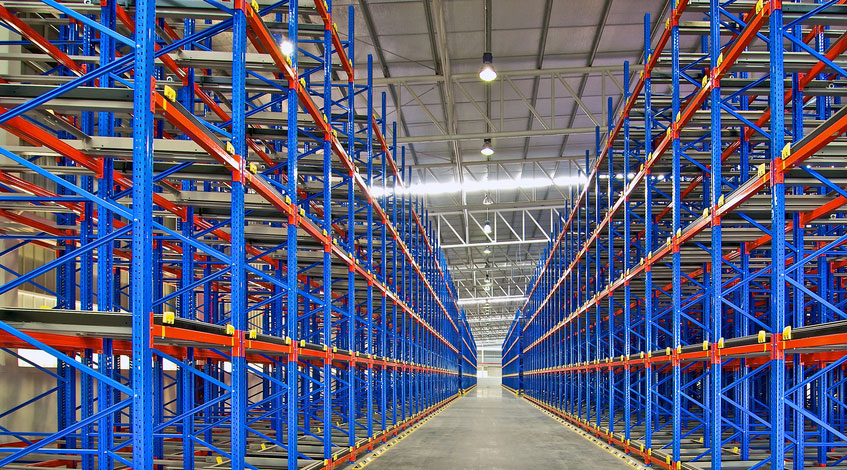Pallet Racking systems prove to be an important asset for warehouses and distribution centers. They help optimize space, increase productivity and provide easy access to inventory.
Premium options like stainless steel racking systems enhance these advantages by offering superior durability and inventory protection. Ideal for specialized environments, such as cold storage or corrosive settings in the food and pharmaceutical industries, they provide an excellent investment for businesses seeking to optimize storage space while maintaining long-term operational efficiency.
Making the most of your storage investment starts with selecting the right Pallet Racking system. A well-chosen system that aligns perfectly with your operational needs can dramatically improve warehouse organization and streamline workflow.
To help you make this important decision, we have compiled a comprehensive guide to various types of warehouse racking systems and their key characteristics. We’ve also included specific industry applications and usage scenarios to help you identify which system best suits your requirements.
Different Types of Racking Systems and Their Uses
1. Selective Racking
Selective Pallet Racking is versatile and easily customizable to suit any warehouse environment, which is why it is the most commonly used storage structure. This system allows you to access all the pallets directly from the aisle, eliminating the need for complex loading and unloading procedures. Thanks to the design of the racking, over 90% of the structure is available for storage.
Among the different types of warehouse racking systems, the installation of Selective Pallet Racking is the easiest of all and also the most cost-effective option for warehouses requiring high selectivity. Go for this type if you require free access to any pallet or if you need to access the pallets more often from the lower levels.
2. Drive-In Racking
This kind of racking is designed for high-density storage, requiring fewer aisles than most systems. Its fabrication helps utilise floor space to its optimum capacity. Drive-In Pallet Racking operates using a single-entry or double-entry system, where forklifts drive into the racks along rails to load and retrieve pallets. This design maximises deep lane storage for large quantities of similar products.
Hence, Drive-In Pallet Racking is a cost-effective and energy-efficient option, making it a popular choice in the manufacturing and food and beverage industries. Consider this type of racking if you need to store high volumes of uniform products.
3. Push Back Racking
Push Back Pallet Racking is available in structural or roll form. Its strong beam structure can safely store large and heavy items while storing different types of products together. The design gives you better control over how you manage your inventory.
This system uses a Last-In-First-Out (LIFO) method, meaning the last items stored are the first ones you can access. This makes Push Back Pallet Racking perfect for products that need regular rotation, especially for sell-by-date items.
4. Cantilever Racking
The configuration of Cantilever Pallet Racking allows storing long and heavy items. These are generally used to store pipes, timber and steel rods. The system comprises long arms that project from a metal framework, providing optimal support for bulky materials of varying lengths.
Cantilever Racking eliminates front columns for unobstructed access, unlike traditional pallet racking systems. This column-free design helps maximize storage capacity while enabling smooth access to your inventory
5. Mobile Racking
Mobile Pallet Racking is a versatile, multi-level storage solution that maximizes space efficiency. The system is configured to access any pallet directly, utilizing up to 90% of the space.
True to its name, Mobile Racks can be easily moved and reinstalled, making them flexible storage solutions that work well in warehouses, offices and showrooms alike. They are especially useful for seasonal storage facilities, where the ability to quickly reorganize storage layouts helps meet changing inventory demands.
Transform Your Warehouse With Kheera Steel Works
Now that you understand the different types of racking systems and their uses, the next step is partnering with a reliable supplier who can deliver and install the perfect solution for your needs. With thousands of successful Pallet Racking installations across the UAE, this is where Kheera Steel Works stands out as your ideal choice. Contact our specialists today to discuss your vision!




Nice post! The post explained different types of pallet racking systems, which will help me to pick right racking for my warehouse. Keep sharing such useful information!
Hey Harry, Thanks for your read. We are glad to hear that you picked the right racking for your warehouse.